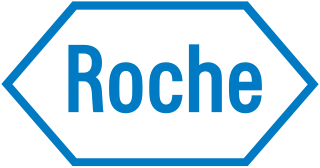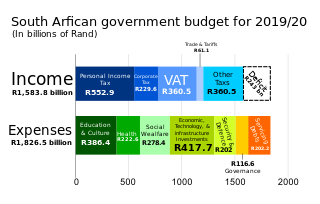Related Research Articles

Novartis AG is a Swiss multinational pharmaceutical corporation based in Basel, Switzerland. Consistently ranked in the global top five, Novartis is one of the largest pharmaceutical companies in the world and was the fourth largest by revenue in 2022.

Venture capital (VC) is a form of private equity financing provided by firms or funds to startup, early-stage, and emerging companies, that have been deemed to have high growth potential or that have demonstrated high growth in terms of number of employees, annual revenue, scale of operations, etc. Venture capital firms or funds invest in these early-stage companies in exchange for equity, or an ownership stake. Venture capitalists take on the risk of financing start-ups in the hopes that some of the companies they support will become successful. Because startups face high uncertainty, VC investments have high rates of failure. Start-ups are usually based on an innovative technology or business model and they are often from high technology industries, such as information technology (IT), clean technology or biotechnology.
A royalty payment is a payment made by one party to another that owns a particular asset, for the right to ongoing use of that asset. Royalties are typically agreed upon as a percentage of gross or net revenues derived from the use of an asset or a fixed price per unit sold of an item of such, but there are also other modes and metrics of compensation. A royalty interest is the right to collect a stream of future royalty payments.

F. Hoffmann-La Roche AG, commonly known as Roche, is a Swiss multinational holding healthcare company that operates worldwide under two divisions: Pharmaceuticals and Diagnostics. Its holding company, Roche Holding AG, has shares listed on the SIX Swiss Exchange. The company headquarters are located in Basel. Roche is the fifth-largest pharmaceutical company in the world by revenue and the leading provider of cancer treatments globally. In 2023, the company’s seat in Forbes Global 2000 was 76.

Vertex Pharmaceuticals Incorporated is an American biopharmaceutical company based in Boston, Massachusetts. It was one of the first biotech firms to use an explicit strategy of rational drug design rather than combinatorial chemistry. It maintains headquarters in South Boston, Massachusetts, and three research facilities, in San Diego, California, and Milton Park, Oxfordshire, England.

Jay M. Short is founder and CEO of the antibody drug company BioAtla, LLC. He was vice president of research and operations at Stratagene, president of the Stratagene antibody subsidiary Stratacyte, then founder and CEO of Diversa until 2005. While at Diversa, Short invented methods of protein and pathway discovery via metagenomics, in addition to evolution technologies gene site saturation mutagenesis (GSSM) and GeneReassembly, and was the first to combine these discovery and evolution technologies.
The pharmaceutical industry in India was valued at an estimated US$42 billion in 2021 and is estimated to reach $130 billion by 2030. India is the world's largest provider of generic medicines by volume, with a 20% share of total global pharmaceutical exports. It is also the largest vaccine supplier in the world by volume, accounting for more than 60% of all vaccines manufactured in the world. Indian pharmaceutical products are exported to various regulated markets including the US, UK, European Union and Canada.
Neurocrine Biosciences, Inc. is an American biopharmaceutical company founded in 1992. The company is headquartered in San Diego, California, and led by CEO Kevin Gorman. Neurocrine develops treatments for neurological and endocrine-related diseases and disorders. In 2017, the company's drug valbenazine (Ingrezza) was approved in the US to treat adults with tardive dyskinesia (TD).
Co-promotion is a marketing practice that allows two or more companies to combine their sales force in order to promote a product under the same brand name and price with a single marketing strategy. It is considered as one of the two major forms of joint marketing. Co-marketing is the other form and these terms are often confused. It is made through an agreement which requires a lot of collaboration between the sales and marketing organisations of both companies. One of the partners usually has a licence to exploit the product and the other partner is the originator or licensor. It helps the less developed areas of a company to be covered by the partner company's strengths and therefore to expand the share of voice in the marketplace for a product. Through co-promotion, a collaborative strategy, the consumer attraction is increased. It is a way co-exploiting products.
In business dealings, transactions often occur that include variables based on future events that can be difficult to ascertain As these transactions are contingent on payments that occur in the future, and the total selling price cannot be determined as of the end of the taxable year of the sale, they are known as Contingent Payment Sales. Because of the uncertainty surrounding the final amounts of these transactions, they are difficult to evaluate for the purpose of tax liability. Section 483 of the Internal Revenue Code provides descriptions for the handling of contingent payments and interest on contingent payments.

Taxes in Indiana are almost entirely authorized at the state level, although the revenue is used to fund both local and state level government. The state of Indiana's income comes from four primary tax areas. Most state level income is from a sales tax of 7% and a flat state income tax of 3.05%. The state also collects an additional income tax for the 92 counties. Local governments are funded by a property tax that is the sum of rates set by local boards, but the total rate must be approved by the Indiana General Assembly before it can be imposed. Residential property tax rates are capped at maximum of 1% of property value. Excise tax is the fourth form of taxation and is charged on motor vehicles, alcohol, tobacco, gasoline, and certain other forms of movable property; most of the proceeds are used to fund state and local roads and health programs. The Indiana Department of Revenue collects all taxes and pays them out to the appropriate agencies and municipalities. The Indiana Tax Court deals with all tax disputes issues, but decisions can be appealed to the Indiana Supreme Court.

Taxation may involve payments to a minimum of two different levels of government: central government through SARS or to local government. Prior to 2001 the South African tax system was "source-based", where in income is taxed in the country where it originates. Since January 2001, the tax system was changed to "residence-based" wherein taxpayers residing in South Africa are taxed on their income irrespective of its source. Non residents are only subject to domestic taxes.

CompugenLtd. is a clinical-stage publicly traded predictive drug discovery and development company headquartered in Israel, with shares traded on the NASDAQ Capital Market and on the Tel Aviv Stock Exchange. Compugen was established as computational drug discovery service provider in 1993. Compugen originally acted as service provider for pharma companies, supplying its software and computational services to predict different types of biological phenomena. It had arrangements with big companies such as Novartis AG, Abbot Laboratories and Pfizer Inc. Subsequently, Compugen made a decision to become a drug development company with its own internal pipeline, and in 2010, decided to a focus on oncology and immunology. OncoMed Pharmaceuticals and Five Prime Therapeutics are among Compugen's competitors.
A royalty fund is a category of private equity fund that specializes in purchasing consistent revenue streams deriving from the payment of royalties. One growing subset of this category is the healthcare royalty fund, in which a private equity fund manager purchases a royalty stream paid by a pharmaceutical company to a patent holder. The patent holder can be another company, an individual inventor, or some sort of institution, such as a research university.

Acceleron Pharma, Inc. is an American clinical stage biopharmaceutical company based in Cambridge, Massachusetts with a broad focus on developing medicines that regulate the transforming growth factor beta (TGF-β) superfamily of proteins, which play fundamental roles in the growth and repair of cells and tissues such as red blood cells, muscle, bone, and blood vessels.

Arbutus Biopharma Corporation is a publicly traded Canadian biopharmaceutical company with an expertise in liposomal drug delivery and RNA interference, and is developing drugs for hepatitis B infection.

Ionis Pharmaceuticals, Inc. is a biotechnology company based in Carlsbad, California, that specializes in discovering and developing RNA-targeted therapeutics. The company has three commercially approved medicines: Spinraza (Nusinersen), Tegsedi (Inotersen), and Waylivra (Volanesorsen) and has four drugs in pivotal studies: tominersen for Huntington's disease, tofersen for SOD1-ALS, AKCEA-APO(a)-LRx for cardiovascular disease, and AKCEA-TTR-LRx for all forms of TTR amyloidosis.

Hanmi Pharm Co., Ltd. is a South Korean pharmaceutical company that is headquartered in Seoul.
Neurobiological Technologies, Inc. ("NTI") was a biotechnology company that was founded in 1987 by Enoch Callaway and John B. Stuppin to in-license and develop drugs primarily to treat neurological conditions; the company was dissolved in 2009 after the failure of its drug candidate ancrod in a Phase III trial for ischemic stroke.
BeiGene, Ltd. is a China-based drug developer. It specializes in the development of drugs for cancer treatment. Founded in 2010 by chief executive officer John V. Oyler and Xiaodong Wang, the multinational company headquartered in Cambridge, Massachusetts has offices in North America, Europe, South America, Asia and Australia. BeiGene has a large presence in Chinese market. BeiGene has developed several pharmaceuticals, including tislelizumab, a checkpoint inhibitor, and zanubrutinib, a Bruton's tyrosine kinase inhibitor.
References
- 1 2 Morrisson, Chris (23 June 2009). "When Is A Billion Dollars Not a Billion Dollars?". In Vivo Blog.
- ↑ Garde, Damian (28 November 2016). "Why billion-dollar biotech deals are often just a mirage". STAT.
- ↑ Harlin, Michael B; O'Connor, Kevin A (24 April 2008). "Leveraging your biotech intellectual property". Bioentrepreneur. doi: 10.1038/bioe.2008.5 .
- ↑ Fischette, Christine (30 May 2004). "What Does Big Pharma Want from Biotech?" (PDF). Asia Pacific Biotech News. 8 (10).
- ↑ Booth, Bruce (8 December 2016). "Hitting The Milestones: Update On Earning "Biobucks" | LifeSciVC". LifeSciVC.
- ↑ Abate, Tom (June 14, 1999). "Passing the `BioBucks' -- Small Investors Aren't In on the Joke / Inflated deal values sometimes only way firms can raise funds". SFGate.